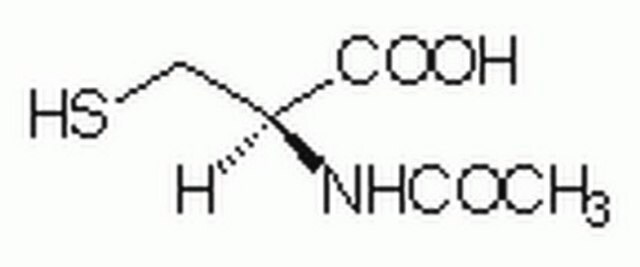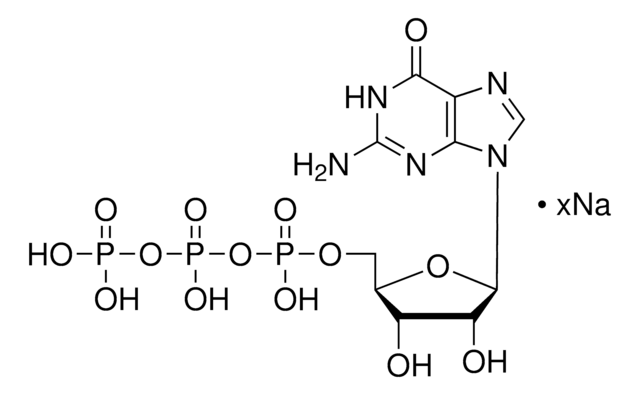V900429
N-Acetyl-L-cysteine
98%, Vetec™
Synonym(s):
LNAC, NAC
About This Item
Recommended Products
product name
N-Acetyl-L-cysteine, Vetec™, reagent grade, 98%
grade
reagent grade
product line
Vetec™
Assay
98%
form
powder
color
white to off-white
mp
106-108 °C (lit.)
application(s)
cell analysis
storage temp.
2-8°C
SMILES string
CC(=O)N[C@@H](CS)C(O)=O
InChI
1S/C5H9NO3S/c1-3(7)6-4(2-10)5(8)9/h4,10H,2H2,1H3,(H,6,7)(H,8,9)/t4-/m0/s1
InChI key
PWKSKIMOESPYIA-BYPYZUCNSA-N
Looking for similar products? Visit Product Comparison Guide
Application
- Antioxidant Assay Development: N-Acetyl-L-cysteine (NAC) is used in the metabolic activation and assessment of cytotoxicity of gramine mediated by CYP3A, showcasing its importance in biochemical assays that measure oxidative stress, a critical factor in IVD reagent development (Gao et al., 2024).
- Cell Differentiation and NF-κB Inhibition: NAC′s role extends to inducing oxidative stress and inhibiting NF-κB pathways, which is crucial for the differentiation of cells in AML treatment. This application demonstrates NAC′s utility in clinical diagnostic reagents aimed at cancer treatment and research (Silva et al., 2024).
- Liver Injury Alleviation: Highlighting its therapeutic applications, NAC is used in alleviating acetaminophen overdose-induced liver injury, underlining its potential use in clinical settings and importance in developing therapeutic IVD assays (Chen et al., 2024).
- Enhanced Cancer Treatment Efficacy: Employed in combination therapies, NAC is used to treat posterior gastric pseudomyxoma peritonei, offering insights into its role as a biochemical agent that enhances the efficacy of cancer treatments in diagnostic and therapeutic applications (Sun et al., 2024).
- Regulation of Cell Cycle and Autophagy: NAC′s interactions with 1-Methoxyisobrassinin in ovarian cancer cells illustrate its capability to modulate cell cycle regulation, apoptosis, and autophagy, underpinning its significant role in the development of biomarker detection assays and other IVD products (Zigová et al., 2024).
Biochem/physiol Actions
Legal Information
Signal Word
Warning
Hazard Statements
Precautionary Statements
Hazard Classifications
Eye Irrit. 2
Storage Class Code
13 - Non Combustible Solids
WGK
WGK 2
Flash Point(F)
Not applicable
Flash Point(C)
Not applicable
Certificates of Analysis (COA)
Search for Certificates of Analysis (COA) by entering the products Lot/Batch Number. Lot and Batch Numbers can be found on a product’s label following the words ‘Lot’ or ‘Batch’.
Already Own This Product?
Find documentation for the products that you have recently purchased in the Document Library.
Customers Also Viewed
Our team of scientists has experience in all areas of research including Life Science, Material Science, Chemical Synthesis, Chromatography, Analytical and many others.
Contact Technical Service








